Last Updated on: 10th December 2023, 06:19 pm
A sharp blade makes lawn maintenance a much easier job, too!
Cutting grass is perhaps one of the most fundamental lawn care tasks. However, many people don’t realize that the quality of your lawn’s cut depends heavily on the sharpness of your lawnmower blades. While it may seem like a small detail, using dull blades can significantly impact the health and appearance of your lawn.
In this content, we will explain the following:
- Five signs of a dull blade.
- Four ways that cutting grass with dull blades could harm (or even kill) your lawn
- The types of damage your lawn might sustain
- A step-by-step guide explaining how to sharpen the blades of your lawnmower to avoid this damage.
Five Early Warning Signs You Are Cutting Grass With Dull Blades
A dull lawn mower blade can result in an uneven cut, torn or shredded grass blades, and a brownish or whitish hue on the top of the grass tips. Some signs you might be cutting grass with dull mower blades include the following:
- Ragged edges: If the grass blades have jagged or torn edges, it could be a sign that the blade is dull and tearing rather than cleanly cutting the grass.
- Uneven cut: If some parts of the lawn are shorter than others, or if the grass looks uneven, it could be a sign that the blade is not cutting the grass evenly.
- Grass tips turning brown: Dull blades can create a “frayed” look on the tips of grass blades, causing them to turn brown or whitish in color.
- Excessive vibration: A dull blade can cause excessive vibration in the mower, which can be felt through the handle or seat of the mower.
- Longer mowing time: A dull blade can require more passes over the grass to achieve a clean cut, which can result in a longer mowing time than usual.

How Cutting Grass With Dull Blades Harms Your Lawn and Decreases Efficiency of Your Mowing Equipment
You might be surprised to hear about these harmful outcomes.
1 – Your lawn is weaker and more susceptible to disease
Using sharp blades ensures a cleaner cut. When blades are dull, they tear the grass instead of cutting it, leaving ragged, uneven edges behind. This can lead to an unsightly appearance and a patchy lawn. You could develop brown or rust patches.
In addition, torn grass blades are more susceptible to disease and pests, making your lawn less healthy overall. By contrast, a clean cut from a sharp blade promotes healthy growth and reduces disease risk.
2 – Increase the efficiency of your lawn mower
Another benefit of using sharp blades is that they make cutting the grass more effortless and increase its efficiency. Dull blades require more force to cut through the grass, making the job more difficult and time-consuming. In addition, a dull blade will often leave behind uncut blades of grass, leading to an uneven cut and a need for repeated passes. This takes more time and can wear and tear your mower unnecessarily.
3 – Extend the life of your mower
Using sharp blades also helps to preserve the life of your lawnmower. Dull blades put more strain on the engine, as it has to work harder to achieve the desired result. Lawn care pros call this “engine drag.”
This impact can lead to overheating, increased fuel consumption, and even damage to the motor. In addition, dull blades can cause the mower to vibrate excessively, leading to premature wear and tear on other parts of the machine.
4 – Cutting grass with dull blades decreases your yard’s curb appeal
using sharp blades helps maintain your lawn’s overall appearance. A clean even cut gives your lawn a professional look, enhancing its curb appeal and making it a more welcoming environment. By contrast, an uneven cut can make your lawn look neglected, unprofessional, and uninviting.
What Damages Can a Lawn Sustain After Cutting Grass with a Dull Mower?
When grass is cut with a dull lawnmower blade, it can cause significant damage to the blades of grass. This damage occurs because dull blades cannot cut through the grass blades cleanly; instead, they rip and tear the grass, causing a jagged, uneven cut. This cut can leave the grass vulnerable to disease and pests and impact your lawn’s overall health and appearance.
One of the main issues with a jagged cut is that it creates an uneven surface on the grass blade, which can impact the plant’s ability to photosynthesize. Photosynthesis is how plants convert sunlight into energy; an uneven cut can disrupt this process. This can lead to weakened grass, discoloration, and a less healthy overall appearance.
In addition to the impact on photosynthesis, the jagged cut creates an entry point for pests and diseases. When the grass blade is torn, it creates a wound that can allow harmful organisms to enter the plant. This can lead to fungal infections, insect infestations, and other issues that can damage the health of the grass.
Furthermore, a jagged cut can also cause stress on the grass plant as it tries to heal itself. The plant will need to expend energy to heal the wound caused by the dull blade, which can take away from other vital processes such as growth and reproduction. This stress can weaken the grass plant and make it more susceptible to other environmental stressors, such as drought or extreme temperatures.
How to Sharpen Your Lawn Mower Blades – A Step-by-Step Guide
Keeping your blades sharp ensures a clean cut and promotes healthy lawn growth. Sharpening the blades can be a simple process that can be done at home with the right tools and a little know-how. This section will provide a step-by-step guide to sharpening the blades on your lawn mower.
Follow these seven steps for sharpening mower blades:
You can be back on track to a healthy lawn and a more efficient mower in no time–just sharpen those blades.
Step 1: Safety First
- Before you begin, turn off the lawn mower and remove the spark plug wire. This is important to prevent the engine from accidentally starting while you are working on the blades.
- Wear gloves and eye protection to protect your hands and eyes is also a good idea.
Step 2: Remove the Blades
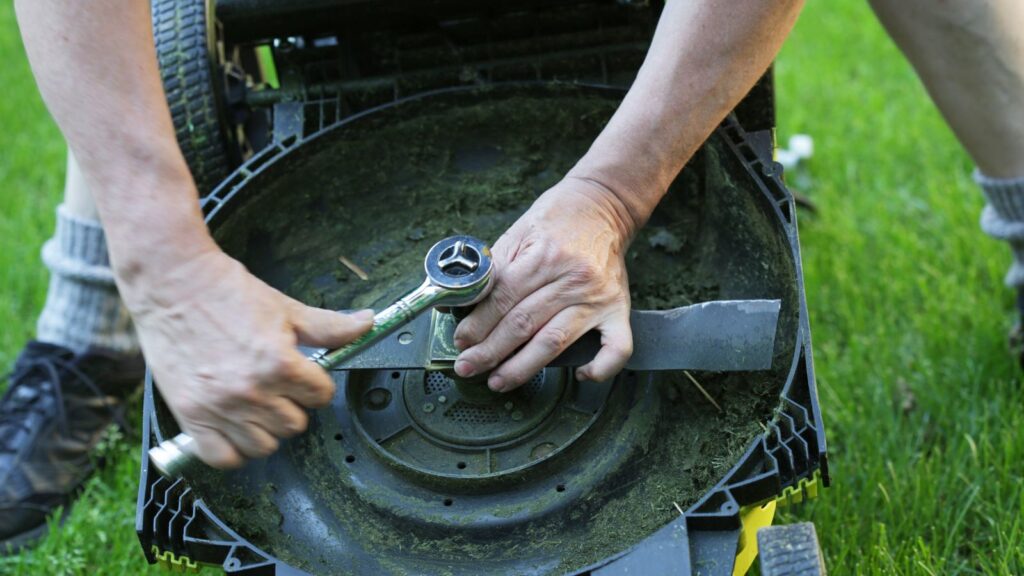
Access the blades under the mower deck.
- If you have a push mower, place a wood block underneath it to stabilize or prevent it from tipping.
- When servicing a riding mower, jack it up or use ramps to ensure stability before proceeding. Then, using a wrench or socket, remove the bolts that hold the blades in place.
- Take care not to damage the blade or the spindle.
Step 3: Clean the Blades
- Once you’ve removed the blades, clean them thoroughly with a wire brush and soapy water to remove any debris or rust.
- Dry them thoroughly with a towel or cloth.
Step 4: Sharpen the Blades
- Using a sharpening stone or file, carefully sharpen the blade edge. It’s crucial to maintain the angle of the original blade edge while removing any nicks or rough spots.
- Work from the blade’s center to the tip in smooth, even strokes.
- Avoid over-sharpening or grinding too much material off the blade, especially for a multi-blade riding mower. This can weaken the blade and reduce its balance.

Step 5: Balance the Blades
- After you’ve finished sharpening, it’s crucial to balance the blade. An unbalanced blade can cause damage to the lawn mower and prevent a clean cut.
- To do this, place the blade on a balancer, such as a blade balancing tool or a nail in a wall, and make sure the blade is level.
- If one end is heavier, remove material from the heavier end until the blade is balanced.
Step 6: Reinstall the Lawn Mower Blades
- Once the blade is sharp and balanced, reinstall it onto the spindle to tighten the bolts securely.
- Avoid over-tightening the bolts, which can cause the blade to warp or crack. It might also weaken your bolt.
- If you have a riding mower, you will have three blades. Be sure you realign them randomly, you do not want to put them in a straight line, as this could cause issues later.
Step 7: Test the Mower
- After sharpening and balancing the blades, test the lawn mower to ensure everything works correctly.
- Reconnect the spark plug wire and start the engine. Listen for any unusual noises or vibrations, which could indicate that the blade is not balanced correctly. Adjust as needed.
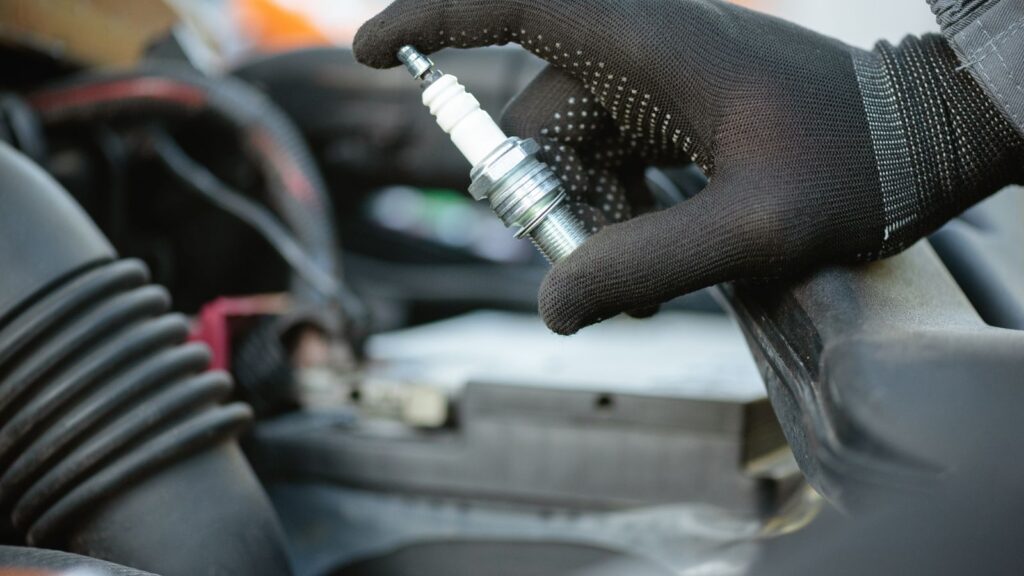
By following these simple steps, you can keep the blades on your lawn mower sharp and in good working order. Regular blade maintenance can help to promote healthy lawn growth and ensure a clean, even cut every time. Remember to wear protective gear and take your time; you’ll have a well-maintained lawn mower in no time.
The Takeaway: Cutting Grass With Dull Blades Can Kill Your Lawn, So Blade Maintenance Is Essential…Or Leave the Lawn Mowing to Tayloe’s Lawn Care Services
Cutting grass with a dull lawnmower blade can cause significant damage to the blades of grass. This damage can impact the health and appearance of your lawn and can leave it vulnerable to pests and disease. Using sharp blades, you can ensure a clean, even cut that promotes healthy lawn growth and prevents damage to the grass blades.
If the step-by-step blade maintenance seems overwhelming, leavethe hard work of cutting grass to Tayloe’s Lawn Care Services. Our equipment is always well-maintained, and we are ready to help. Connect with us at 252.287.3376.
Author Profile

- Randy Tayloe is the COO of Tayloe's Lawn Care Service, LLC. He is a certified custom applicator, recognized by the North Carolina Department of Agriculture Pesticide Division. A native of Bertie County, NC, and graduate of Bertie High School, he wants to beautify his home county - one yard at a time.
Latest entries
 GardeningApril 1, 2025Fountain grasses add colorful foliage and movement
GardeningApril 1, 2025Fountain grasses add colorful foliage and movement GardeningMarch 21, 2025White cloud muhly grass growing guide
GardeningMarch 21, 2025White cloud muhly grass growing guide Lawn CareFebruary 25, 2025Should I mow every week?
Lawn CareFebruary 25, 2025Should I mow every week? Lawn CareFebruary 18, 202515 Simple early spring lawn care tips
Lawn CareFebruary 18, 202515 Simple early spring lawn care tips

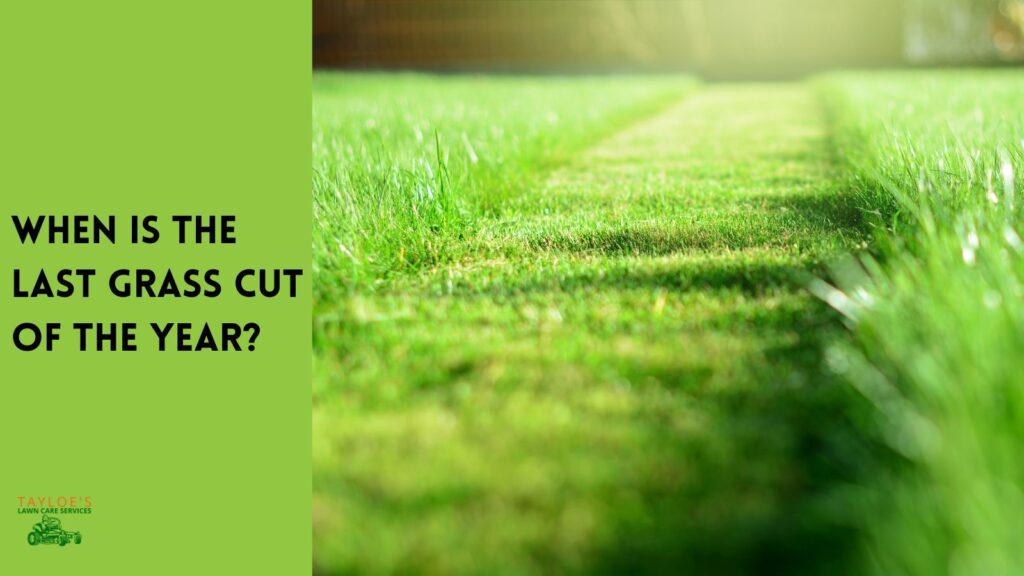




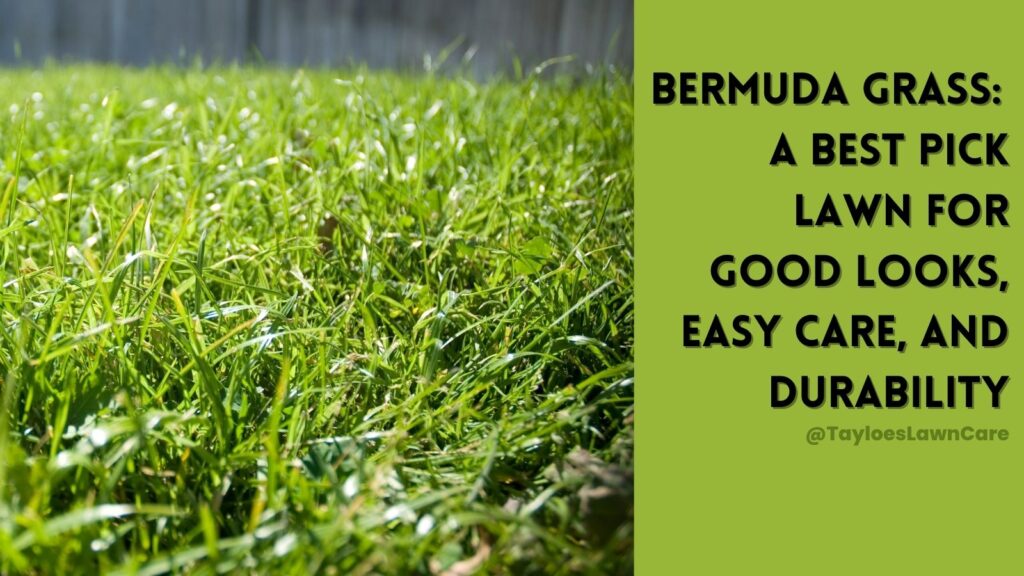
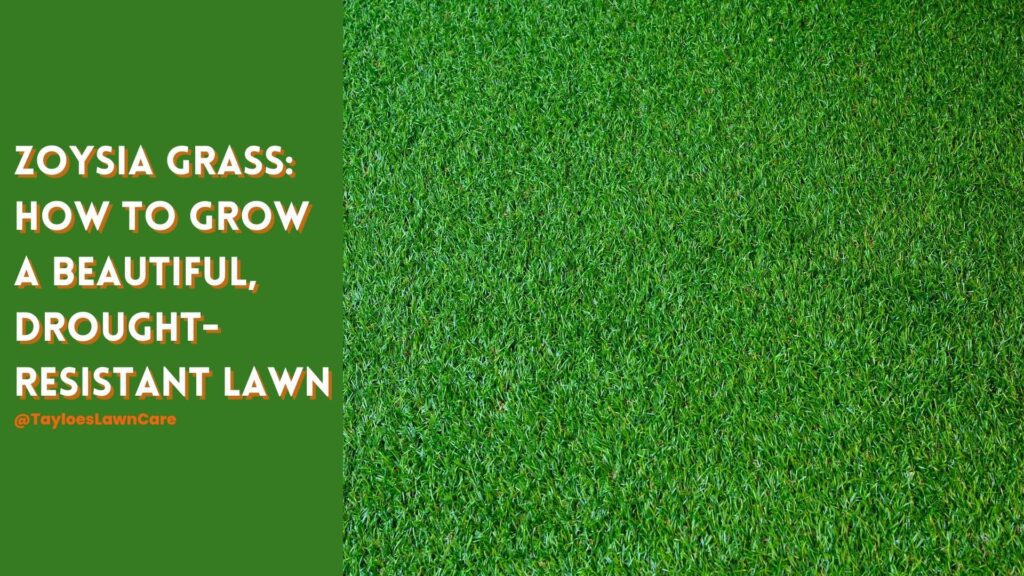
Pingback: Bermuda Grass: A Best Pick Lawn for Good Looks, Easy Care, and Durability